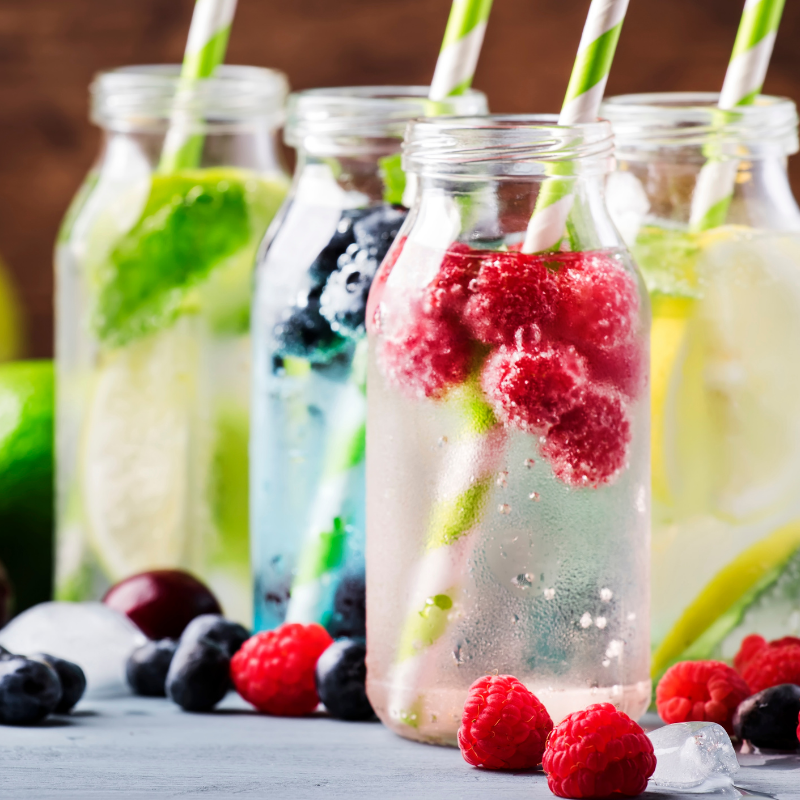There is nothing like a big slushy or a double-scoop ice-cream cone on a hot summer day. But then it hits you: an excruciating headache that feels like you are being stabbed in your temples and right between the eyes – you just got brain freeze.
Brain freeze, also called ice-cream headache, occurs when something very cold comes in contact with your upper palate (aka the roof of your mouth) too fast. While painful and extremely unpleasant, it’s not a serious condition, and it goes away on its own within a few minutes or even seconds.
If you’ve ever had brain freeze before, you probably learned to avoid it at all costs. Eating and drinking cold substances slowly can help reduce your chances of getting it, and drinking some warm water can help you recover faster.

But despite their bad reputation, there may be some upsides to these dreadful headaches. Keep reading to find out how brain freeze may actually be beneficial for treating more severe headaches, and migraines.
Understanding brain freeze
Brain freeze is a common phenomenon that can affect anybody that eats or drinks very cold substances too fast, though people may also get brain freeze from inhaling cold air quickly or after diving into freezing water. Brain freeze is known to start when the cold substance hits the roof of the mouth or the back of the throat and stimulates blood vessels and nerves in these temperature-sensitive areas.
Much like a big gulp of iced coffee on a hot summer day, the medical term for brain freeze can be a mouthful: sphenopalatine ganglioneuralgia. That name means “nerve pain of the sphenopalatine ganglion,” which is a cluster of nerve cells in the parasympathetic nervous system. These nerves are located behind the boney part of the nose and are closely associated with the trigeminal nerve, which is the main nerve that causes head pain and is involved in headache disorders.
There are several theories that explain why painful brain freeze occurs, including a cold sensation causing blood vessels to constrict (tighten) and then rapidly dilate (widen) near the palate and back of throat. This results in a sudden feeling of pain.
Other theories look at the internal carotid artery as potentially responsible for these painful episodes. The internal carotid artery is a branch of the common carotid artery, which supplies oxygenated blood to the head and neck. The internal carotid extends upward through the neck, passes very close to the skin’s surface at the roof of your mouth, and enters the skull to supply blood to the brain’s frontal lobes.
Experts believe that consuming extremely cold substances causes the internal carotid artery to dilate and pump more blood to the brain, probably trying to counteract the cold stimulus with a blast of warm blood. This sudden widening of the internal carotid artery seems to be partly responsible for the brain freeze sensation.
Brain freeze and migraines
Brain freeze was, until fairly recently, just an unsavory side effect of eating ice-cream and other cold treats. But over the past few years, researchers have begun to understand what happens to the brain during these episodes and how they may be related to migraines and other headache disorders.
In a small research study published in the Federation of American Societies for Experimental Biology (FASEB) journal, 17 participants were asked to self-induce brain freeze by sipping iced water through a straw aimed at the roof of their mouths. Throughout the experiment, the volunteers were monitored with an ultrasound machine that measured changes in their cranial blood flow.
The researchers were able to identify the specific changes and activities before, during, and after an episode of brain freeze and compare them to another group of participants drinking room temperature water in a separate room.
Results showed that participants who drank iced water experienced more brain freeze pain when the anterior cerebral artery (a branch of the internal carotid artery) swelled up and blood rushed towards the brain. The pain decreased as soon as the artery constricted back to its normal diameter.
According to the authors, similar blood flow issues are at least partly responsible for other types of headaches, including migraines and headaches from traumatic brain injuries. If that is the case, new migraine treatments that control blood pressure to and from the internal carotid artery could help ease migraine pain.
There is also plenty of anecdotal evidence suggesting that self-inflicted brain freeze can halt migraines. Migraineurs who vouch for this method report that sucking ice chips, drinking slushies or iced water, or eating ice-cream or popsicles can significantly improve and sometimes even stop migraine symptoms altogether.
So, should you induce brain freeze to get rid of a migraine? It may be worth a try! Brain freeze, while unpleasant, is not dangerous in and of itself. And while more research is needed to understand the connection between cold stimuli and migraines, there is some scientific evidence suggesting a potential scientific link between the two.
About AKESO
AKESO formulates world class dietary supplements that provide nutritional support for the most common health issues that concern people most, such as migraines, headaches, joint health, stress & anxiety, memory, sleeplessness, ADHD, and more. Changing lives is the reasons we wake up every day passionate about the special products we provide to our customers. Helping you to get well and stay well is our bottom line.


